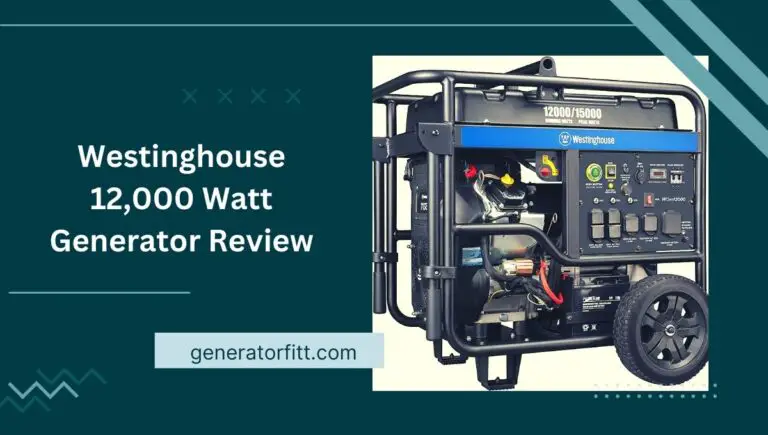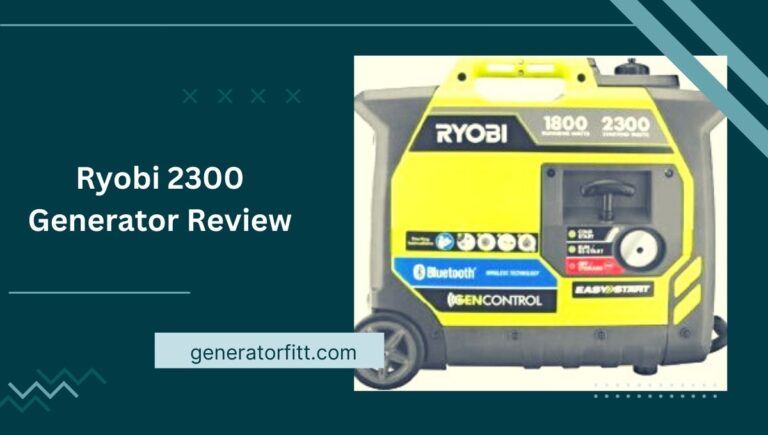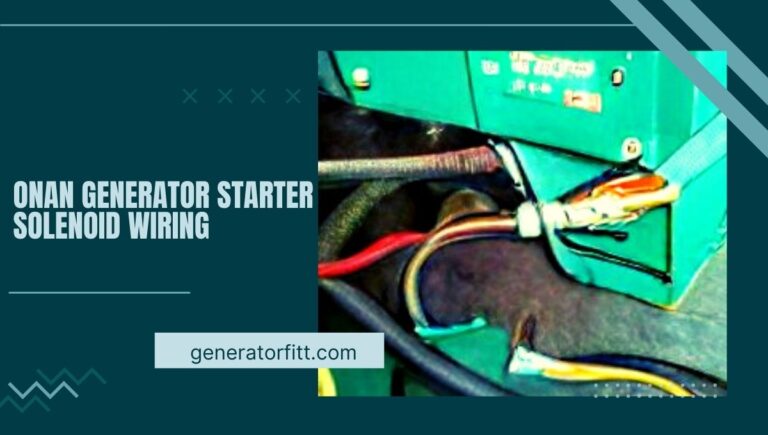How to Wire an Alternator as a Generator? (Process Explain) In 2023
How to Wire an Alternator as a Generator? In today’s world, where energy efficiency and sustainability are paramount, finding alternative ways to generate power is essential.
One such method is converting an alternator into a generator. If you’ve ever wondered how to harness the power of an alternator to generate electricity, you’ve come to the right place.
In this comprehensive guide, we will walk you through the process step by step, ensuring that you can successfully wire an alternator as a generator for various applications.

How to Wire an Alternator as a Generator?
Converting an alternator into a generator involves rewiring it to produce DC (direct current) instead of AC (alternating current). Here’s a simplified guide:
Materials You’ll Need:
- Alternator: Ensure it’s suitable for conversion; not all alternators can be easily converted.
- Voltage Regulator: A solid-state voltage regulator capable of handling the alternator’s voltage output.
- Pulley: You might need to change the pulley to adjust the speed.
- Belt: Match it to the new pulley size.
- Battery: To store and regulate the generated power.
- Wiring: High-quality cables, connectors, and terminal blocks.
- Diode Bridge Rectifier: Converts AC to DC.
- Switches and Fuses: For safety and control.
Steps:
- Disconnect the Battery: Ensure there’s no electrical connection while working on the alternator.
- Remove the Voltage Regulator: Many alternators have an internal regulator. Remove or bypass it.
- Replace Pulley: If necessary, change the alternator’s pulley to match your desired RPM (revolutions per minute).
- Wire the Diode Bridge Rectifier: Connect the diode bridge rectifier to the alternator’s AC terminals. This converts AC to DC.
- Connect the Alternator to the Battery: Wire the DC output of the diode bridge rectifier to the positive terminal of the battery. Connect the negative terminal of the battery to the alternator’s case for grounding.
- Install Switches and Fuses: Add an on/off switch and fuses for safety and control.
- Testing: Start the engine and turn on the alternator. Monitor voltage output and adjust the engine speed if necessary.
- Voltage Regulation: Ensure the voltage doesn’t exceed the battery’s safe charging voltage. Use a solid-state voltage regulator if required.
Remember, this is a simplified overview, and the specific steps may vary depending on your alternator’s make and model.
Consult your alternator’s manual or seek professional advice if you’re unsure about any aspect of the conversion.
Safety is paramount when working with electrical systems, so proceed with caution and adhere to all safety guidelines.
The Basics of an Alternator
Before we dive into the conversion process, it’s crucial to understand what an alternator is and how it functions.
An alternator is a device commonly found in vehicles, responsible for generating electrical power to charge the battery and power various vehicle components.
Preparing the Necessary Tools and Materials
To get started, gather the tools and materials you’ll need for this DIY project. These include wrenches, wire cutters, electrical tape, a voltage regulator, and a deep-cycle battery.
Safety First: Precautions to Take
Safety should be your top priority throughout this project. Ensure that the alternator is disconnected from any power source, wear protective gear, and work in a well-ventilated area.
Identifying the Alternator Components
Familiarize yourself with the alternator’s components, such as the rotor, stator, and diode trio. Understanding their roles is essential for the conversion process.
Disconnecting the Alternator from the Vehicle
Before you can convert the alternator, you must disconnect it from the vehicle’s electrical system. Safely remove all wires and connections.
Modifying the Alternator
To convert the alternator into a generator, you’ll need to modify it. This step involves rewiring the internal components to enable power generation.
Wiring the Alternator as a Generator
Learn how to wire the alternator correctly to ensure efficient power generation. Follow a wiring diagram to make the necessary connections.
Connecting to a Voltage Regulator
A voltage regulator is essential to maintain a stable electrical output. Connect it to the alternator to control the voltage.
Grounding the System
Proper grounding is crucial to prevent electrical mishaps. Find out how to ground your alternator-generator system effectively.
Testing the Generator
Before putting your DIY generator to work, conduct thorough testing to ensure it functions as expected and produces the desired voltage.
Adding a Battery for Storage
Discover how to integrate a deep-cycle battery into your setup to store the generated power for later use.
Maintenance Tips for Your DIY Generator
Maintaining your alternator generator is essential for its longevity and performance. Learn about routine maintenance tasks to keep it in top shape.
Applications and Benefits of an Alternator-Generator
Explore various applications for your alternator generator, from providing backup power during outages to powering remote locations off the grid.
Troubleshooting Common Issues
Troubleshooting common issues when wiring an alternator as a generator can help ensure your DIY project runs smoothly. Here are some common problems you might encounter and how to address them:
1. No Output Voltage:
- Check Connections: Ensure all connections are secure and correctly wired. Pay attention to the diode bridge rectifier, battery connections, and grounding.
- Diode Bridge Rectifier: Verify that the diode bridge rectifier is functioning correctly. Test it with a multimeter to ensure it’s converting AC to DC.
- Pulley Speed: Ensure the alternator is spinning at the appropriate speed. If it’s too slow, it may not produce sufficient voltage.
2. Overcharging the Battery:
- Voltage Regulation: If your system is overcharging the battery, you may need to add or adjust a voltage regulator. This device ensures that the battery receives a safe and controlled charge.
3. Undercharging the Battery:
- Low RPM: If the alternator isn’t spinning fast enough, it may not generate enough voltage to charge the battery adequately. Consider adjusting the pulley size or increasing the engine speed.
4. Electrical Shorts:
- Check Wiring: Inspect all wires for exposed or frayed sections that could cause a short circuit. Ensure that wires are properly insulated and separated.
5. Fuses Keep Blowing:
- Circuit Overload: Frequently blown fuses may indicate an overload in the circuit. Check the capacity of your fuses and ensure they can handle the electrical load. If the issue persists, inspect the wiring for shorts.
6. Excessive Heat:
- Inadequate Cooling: If the alternator becomes excessively hot, it might indicate a cooling issue. Ensure there’s adequate ventilation around the alternator, and consider adding a fan or heat sink if necessary.
7. Uneven Charging:
- Battery Health: Check the condition of your battery. An old or damaged battery might not accept a charge evenly.
8. Voltage Drops:
- Resistance: High resistance in the wiring can cause voltage drops. Ensure all connections are clean and tight.
9. Noisy Operation:
- Bearing Issues: If you hear unusual noises, it might indicate bearing problems in the alternator. Disassemble the alternator and inspect the bearings for wear or damage.
10. Alternator Doesn’t Start:
- Battery Voltage: Ensure that the battery you’re using to jumpstart the alternator is charged and in good condition. A dead or weak battery won’t provide enough initial power to kickstart the alternator.
People also ask
Can you turn an alternator into a generator?
Yes, you can convert an alternator into a generator with the right modifications and wiring changes.
Can a car alternator power a house?
Yes, a car alternator can potentially power a house, but it would require significant modifications, a voltage regulator, and proper wiring to do so safely and effectively.
How much electricity can an alternator generate?
The amount of electricity an alternator can generate depends on its size and capacity, typically ranging from 50 to 120 amps in most car alternators.
The power output can vary depending on the rotational speed and load conditions but is usually in the range of 600 to 1,500 watts for a standard car alternator.
How does an alternator work as a generator?
An alternator can work as a generator by reversing its typical function. In a car, the alternator generates electricity to charge the battery and power vehicle systems.
To use it as a generator, you need to modify its wiring, so it produces electricity when turned manually or by an external power source.
By doing this, the alternator becomes capable of generating electrical power that can be used for various purposes, such as providing backup power or charging batteries.
Conclusion: Powering Your World with an Alternator-Generator
In conclusion, wiring an alternator as a generator is a practical and cost-effective way to generate electricity in various DIY projects.
By following the proper steps and safety precautions, you can harness the power of an alternator to produce electrical energy for various applications.
Whether it’s for backup power, off-grid setups, or experimenting with renewable energy sources, this conversion offers a versatile solution.
Remember to consult specific wiring diagrams and guidelines for your alternator model to ensure a successful and safe conversion process.
Hi, I am Brines Loe and I am an Expert in Generators I have Experience in This Field I want to Help You About This Website! Welcome to our generator (Outdoor) Guide blog! We are dedicated to providing you with the latest information and tips on outdoor generators, ensuring that you have the knowledge you need to make informed decisions about which generator is right for you.






